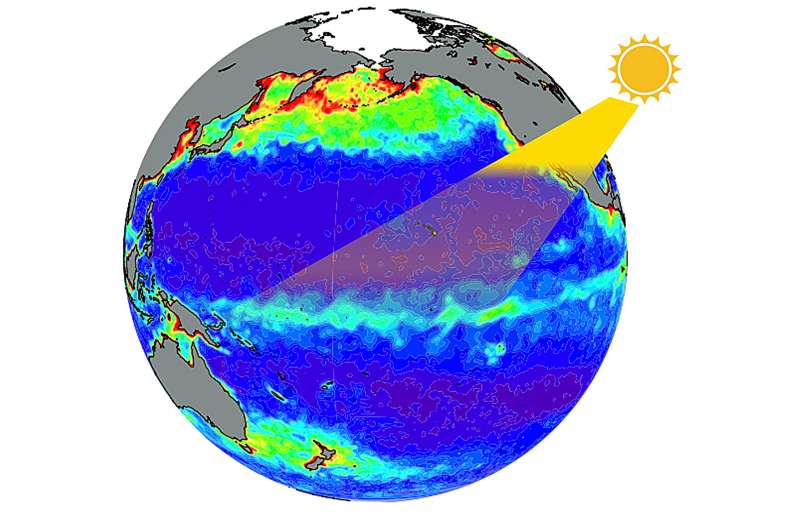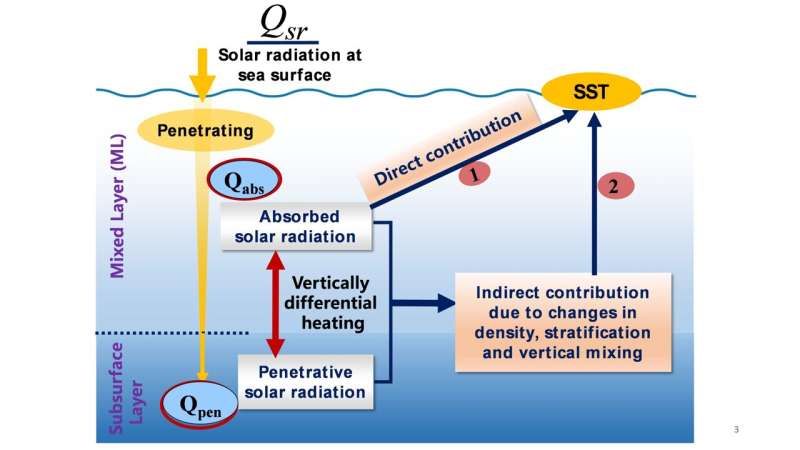This article has been reviewed according to Science X's editorial process and policies. Editors have highlighted the following attributes while ensuring the content's credibility:
fact-checked
trusted source
proofread
Counteracting effects on ENSO due to ocean chlorophyll interannual variability and instability in the tropical Pacific

In as study published in the journal Science China Earth Sciences and led by Prof. Rong-Hua Zhang (School of Marine Sciences, Nanjing University of Information Science and Technology), large perturbations in chlorophyll (Chl) were observed to coexist at interannual and tropical instability wave (TIW) scales in the tropical Pacific.
"At present, their combined effects on El Niño-Southern Oscillation (ENSO) through ocean biology-induced heating (OBH) feedbacks are not understood well," Zhang says.
Zhang and his coworkers adopted a hybrid coupled model (HCM) for the atmosphere and ocean physics-biogeochemistry (AOPB) in the tropical Pacific to quantify how Chl perturbations can modulate ENSO at interannual and TIW scales, individually or collectively, respectively.
The team found that the HCM-based sensitivity experiments demonstrate a counteracting effect on ENSO: the bio-climate feedback due to large-scale Chl interannual variability acts to damp ENSO through its impact on upper-ocean stratification and vertical mixing, whereas that due to TIW-scale Chl perturbations tends to amplify ENSO.

The researchers also illustrated that because ENSO simulations are sensitively dependent on the ways Chl effects are represented at these different scales, it is necessary to adequately take into account these related differential Chl effects in climate modeling. A bias source for ENSO simulations is illustrated that is related to the Chl effects in the tropical Pacific, adding new insight into interactions between the climate system and ocean ecosystem on different scales in the region.
"These new exciting results reveal a level of complexity of ENSO modulations resulting from Chl effects at interannual and TIW scales, which are associated with ocean biogeochemical processes and their interactions with physical processes in the tropical Pacific," Zhang says.
More information: Rong-Hua Zhang et al, Counteracting effects on ENSO induced by ocean chlorophyll interannual variability and tropical instability wave-scale perturbations in the tropical Pacific, Science China Earth Sciences (2023). DOI: 10.1007/s11430-023-1217-8
Provided by Science China Press




















